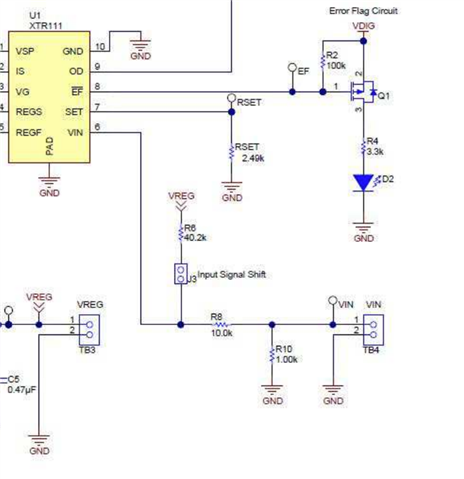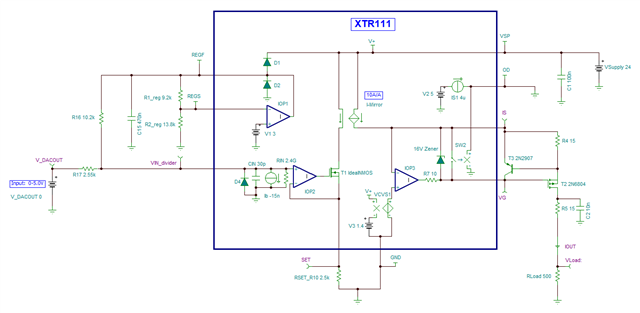Other Parts Discussed in Thread: XTR111, TIDA-01536
Hello everyone, I'm using the XTR111 to convert a 0-5V input voltage to a 4-20mA output, as shown in the picture below.

I would like to know in this case the transfer function for the output current.
Luigi






